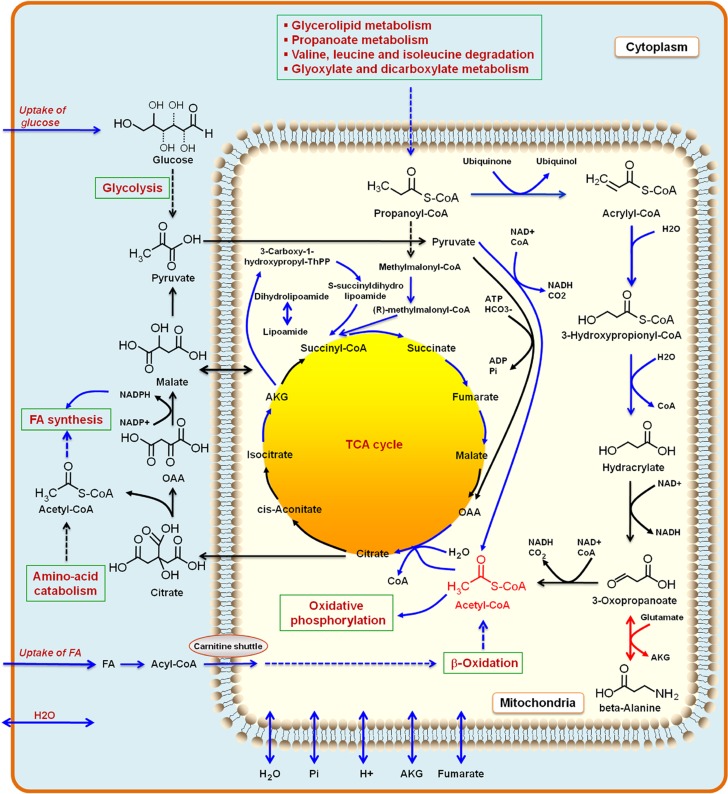Figure 7.
Illustration of the reactions and metabolites obtained from random sampling. The random sampling algorithm identifies set of reactions that are transcriptionally regulated and enzymes with transcriptional regulation showed enrichment. This suggests that the regulation of metabolism in adipocytes in obese and lean subjects has evolved to contain a few flux-regulating potential transcription factors that could be the target for genetic manipulations to redirect fluxes. The random sampling algorithms indicate that uptake of glucose, fatty acids (FAs) and water, FA synthesis and mitochondrial metabolic processes such as oxidative phosphorylation, β-oxidation, TCA cycle and β-alanine metabolism is downregulated (blue arrows in figure). Increasing the metabolic activity of mitochondria by increasing the concentration of mitochondrial acetyl-CoA may provide new strategies for treatment of obesity. One way to increase the mitochondrial acetyl-CoA concentration may be through increasing the uptake of beta-alanine as found from our random sampling results. Some of the major known biological pathways of adipocytes are shown in green boxes.

